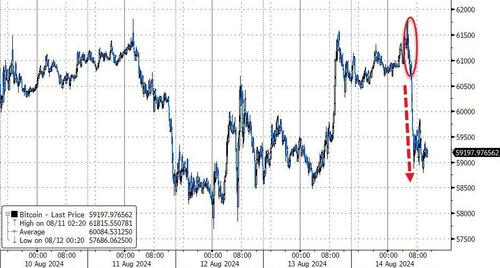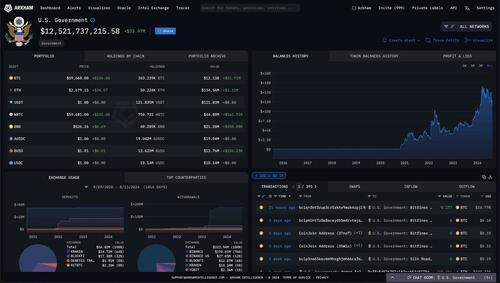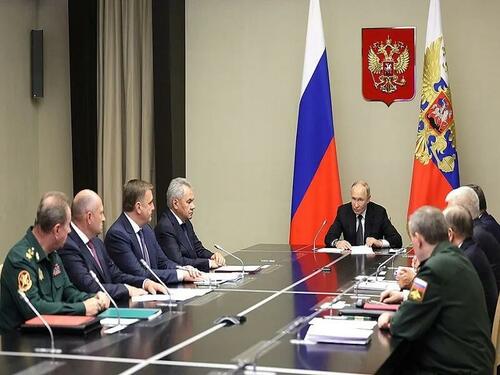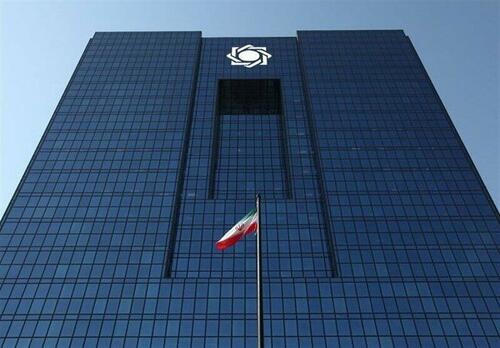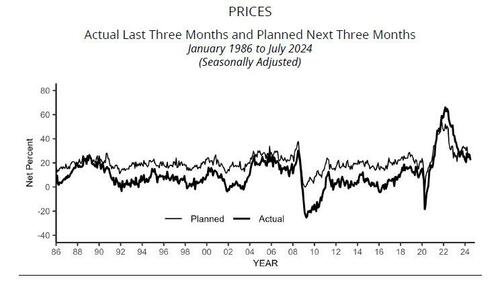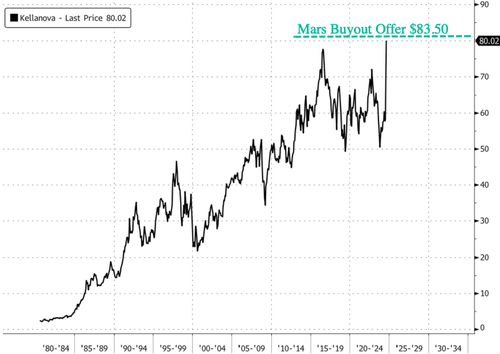Authored by James Rickards via DailyReckoning.com,
When a relatively unknown individual steps on the political stage as a candidate for high office, both sides race to “define” the candidate and stamp his image in the public mind.
Since the Democrats knew they would pick Gov. Tim Walz of Minnesota for their VP candidate, they had time to pre-produce the public image.
He’s not particularly fit or good-looking. No problem! They pushed him as a folksy, down-to-earth Midwestern type who could relate to everyday Americans and understand their problems.
Maybe he’s a bit on the heavy side but that’s OK, so are millions of Americans, and it just shows he likes to chow down on popular meals like burgers, hot dogs, chili and whatever else you might find at a barbecue.
Well, it took the Republicans a few days to catch up, do the needed research and tell us about the real Tim Walz. It turns out he is one of the most far-left radical politicians in the history of America.

Some “Moderate”
During COVID, he enforced mask mandates, vaccine mandates and lockdown rules in more draconian ways and for far longer than any other governor. He even set up a “snitch” hotline so citizens could rat out their neighbors for not wearing masks or for going outside for a walk.
This is what we came to expect in communist countries during the Cold War; and under Walz, Minnesota was no different.
He also discarded the traditional Minnesota state flag and replaced it with a new star-on-blue motif that closely resembles the national flag of Somalia (Somalis are a large part of the population of Minnesota, thanks to Obama’s policy of concentrating immigrant nationalities in targeted areas to gain political power. This is how we ended up with politicians like the Mogadishu-born Ilhan Omar.)
That’s just the beginning of how radical Walz is. He favors “abortion” up to and beyond a live birth (that’s infanticide). He lied about his military record (something called “stolen valor,” which is condemned by all who have served honorably).
He made Minnesota a “trans sanctuary” state (to permit genital mutilation of out-of-state minors without parental notification) and spent his honeymoon in Communist China.
During the George Floyd riots in 2020, Walz did nothing to stop the burning and looting and his wife even opened the windows in their home so she could enjoy the smell of burning tires.
The Democrats and the mainstream media can give you a false narrative about Walz being the “Midwest Dad.” The facts say otherwise.
Why Walz?
Why did Kamala pick Walz?
Many expected that she’d select Gov. Josh Shapiro of Pennsylvania. After all, Pennsylvania is a key swing state that could help deliver the election to the Democrats. Walz is from Minnesota, which is already a blue state (it’s possible Trump could win Minnesota, but not likely).
But Shapiro is Jewish and has publicly supported Israel in its war against Hamas in Gaza. That would have been deeply unpopular with much of the Democratic Party’s young base, which is for the most part fervently anti-Israel.
By going with Walz, it seems the strategy was to shore up the base, while hoping the “Midwest Dad” narrative would pick off enough uncommitted voters in swing states like Wisconsin and Michigan who would otherwise vote for Trump.
Democrats would try to frame him as a moderate alternative to voters who didn’t really like Trump, but would hold their noses and vote for him anyway.
The narrative about Walz being a moderate is collapsing, as I described above, but that seems to have been the strategy. Nice job, Kamala.
North Korea-Level Propaganda
Meanwhile, the mainstream has fallen predictably into line to support her. She’s opposing Trump, so that’s to be expected. They’d literally support a corpse if the alternative was Trump. The same people who announced in 2021 that Harris was being appointed the “border czar” are now trying to tell you that she was never the border czar.
It’s North Korea-level propaganda.
All Harris did was go to Guatemala and babble about “root causes” of immigration before washing her hands of the whole thing. The catastrophic results are all around us.
Of course, if you were Kamala Harris you wouldn’t want it known that you were the border czar. She failed miserably at her supposed mission to control illegal immigration. The level of illegal immigration we’ve had under this administration is nothing short of staggering.
In that sense you can say that she actually succeeded as border czar because much of the Democratic Party wants open borders and unfettered immigration (future voters — and in many cases probably current voters!).
But you won’t hear that in the mainstream media.
The Ditz Candidate
They also like to cite questionable polls claiming that Harris is now leading Trump in certain battleground states, attempting to give the impression that she really is a strong candidate and actually popular with voters.
But not too long ago, Harris had a favorability rating of only 29% in a CNN poll. That was lower than Joe Biden himself before he announced that he won’t seek reelection! Even Joe got 39% in favorability ratings.
Harris cannot speak extemporaneously, a key skill for debaters and candidates. She resorts to third-grade baby talk about “big yellow school buses” and “the big moon up in the sky.” She laughs in a high-pitched tone at inappropriate times, no doubt a nervous tick to cover for the fact that she can’t think on her feet.
Biden may be demented, but Harris is a dunce. The Democrats will have as much difficulty covering up her low IQ as they did covering up Biden’s dementia.
That’s why they’re carefully crafting her public appearances in order to limit opportunities for her to say something embarrassing.
Will Joe Step Down?
All Harris has done since being handed the baton from Biden is to read pre-prepared remarks off a teleprompter. She’s not taking questions from reporters or doing any interviews, even from a friendly host who’d ask her softball questions.
It’s clear that she’s being coached on how to act. Her handlers know how bad the cackling makes her sound, so they’ve probably been coaching her to dial it down.
One strategy to increase Harris’ popularity going into the election would be for Biden to resign the presidency in the days ahead (for “health” reasons maybe), make Kamala the president and let her reap the benefits of running as an incumbent president instead of an anointed elite outsider.
It would also be a way for Biden to get presidential pardons for the Biden Crime Family without having to pardon himself. That’s a smart strategy. For that reason, you can count on Biden not to do it.
I’m still predicting that Trump will win in November, but you can expect the media to do everything it can to get Kamala Harris elected.
